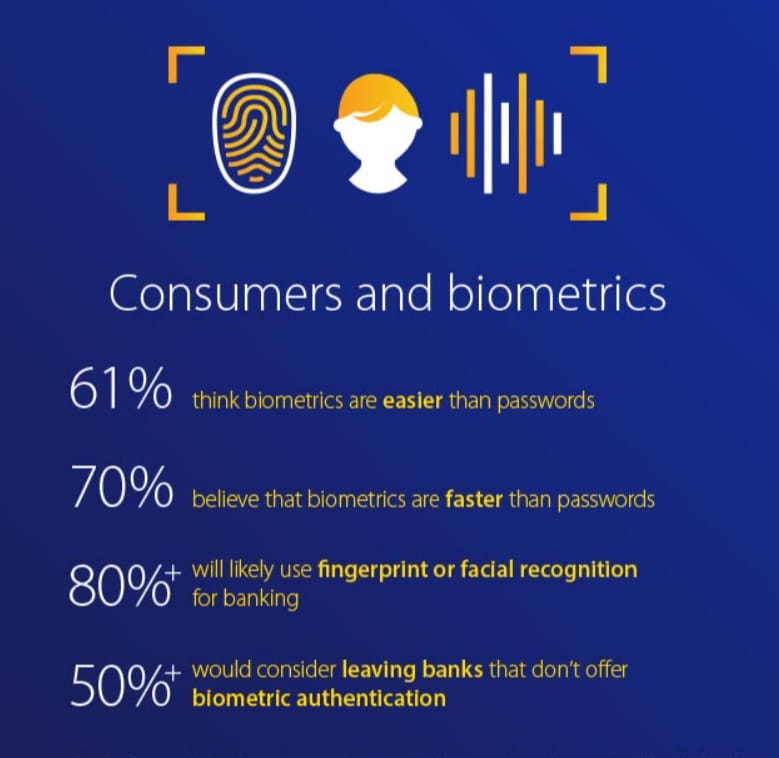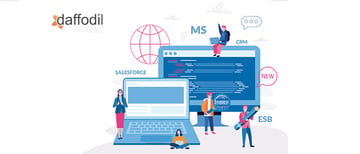
Increasingly today, Financial Technology (FinTech) companies have been using mobile devices and applications as promotional platforms. Biometrics technologies are a necessary addition to the FinTech domain and have the critical task of enhancing security through the accurate identification and verification of the customer's identity.
While mobile app-based FinTech solutions offer customers the luxury of carrying out financial transactions across the world with the tap of a button, this also makes them highly vulnerable to cyber-attacks. The increase in online information exchange and peer-to-peer interactions over public networks provides ample opportunities for hackers to breach them and steal user data to use for illegal purposes.
This article will explore the various ways in which biometrics technologies can be leveraged for shielding against data breaches and innovating to meet regulatory requirements and customer expectations.
What Are Biometrics?
Biometrics basically means identifying individuals by specialized recognition of particular aspects of their physical and behavioral characteristics.
In today's highly vulnerable online environment, biometrics leverage technologies such as Deep Learning (DL) and Neural Networks (NN) to distinguish between authorized and unauthorized users. In terms of their application in FinTech, by using image recognition tools built on the previously mentioned technologies, highly intuitive, innovative, and practical solutions are developed for tightening the security of digital finance.
The Advantages Offered By Biometrics In FinTech
The application of biometrics technologies in FinTech opens up a multitude of advantages that allows customers to carry out online transactions without worrying about the security of their funds. This also allows financial corporations to keep their customers satisfied and offer their services in a frictionless manner. Some advantages offered by biometrics include:
- By allowing customers to keep their funds secure plainly by fingerprint, iris, or facial recognition software-based means, biometrics improve customer satisfaction and enhance repeat business.
- Biometrics authentication enhances internal security for users of mobile devices as these tools can be deployed and implemented for identity and access control from anywhere.
- Through means to ensure non-repudiation, confidentiality, and account integrity, biometrics software prevents identity theft.
- Spoof attacks that allow a free flow of money laundering activities can be prevented through facial biometrics authentication that ensures that only authentic and legitimate money is moved and the necessary tax is paid.
Customer Success Story: Daffodil digitizes over 150 document intensive workflows for Abu Dhabi’s largest bank.
Most Popular Ways Biometrics Is Utilized In FinTech
FinTech needs to continuously innovate and come up with technological solutions that address the prevalence of issues such as security breaches and the protection of data.

Source: Verizon
New FinTech companies today are offering highly cost-effective, low-code, and convenient authentication software that applies biometrics to secure financial exchanges. The following are some of the ways in which this is being done:
1)Replacing PIN/Password Authentication
Authentication and securing of mobile apps and web-based financial operations through PIN and password is no longer a secure enough solution. Cybercriminals have figured out that even simple strategies such as brute force algorithms can be used to override these authentication mechanisms.
Hackers can even leverage user information that is public on social media to hack the passwords of banking apps. A Verizon report suggests that over 80% of money account breaches occur because of a weak password as many people rely on strings that contain their names or numbers that can be guessed easily.
2)Customer Convenience In Retail Transactions
Retail payment gateways and physical payment systems are mostly using passwords and OTP to authenticate payments but this is not a very reliable means of security as discussed above. As smartphones are the primary transaction device used for retail by customers, their various constituent features can double up as biometrics scanners for financial authentication.
Facial recognition can be enabled with the front camera, while fingerprint sensors and voice recording can also be used as tools to facilitate biometric authentication. These help counteract the drawbacks of payments through mobile phones such as unintentional payments. Dataphones, devices that allow customers to finish payments at retail outlets, can also integrate biometrics to enhance the security of these payments.
3)Multi-factor Biometrics
Multi-factor authentication (MFA) utilizes multiple credentials to verify a user's identity for enhanced security. MFA is often a tedious extra task that dulls the customer experience but with biometrics, the customer experience can be made less frustrating and more straightforward. For instance, facial recognition software integrated with passive liveness detection offers increased accuracy facilitating MFA more effectively.
Liveness detection can be defined as a form of MFA within biometrics as it can detect attempts at unauthorized access. When fraudsters use methods such as video replays, synthesized voice, 2D, 3D masks, and so on, passive liveness detection software can distinguish between these and access by the authorized user.
4)Enterprise Data Protection With Biometric Badging
Financial corporations are storehouses of yottabytes of highly sensitive customer information and breaches within such organizations have life-changing consequences. So these corporations pay very close attention to protecting their data from human error-based breaches. Biometric technology-based badges and IDs with RFID chips help track employees who spend suspiciously long durations in restricted areas of the office building.
Additional layers of security can be ensured with NFC-based capabilities in the employee ID card. They can help ensure contactless access control to avoid moisture and dust from coming in contact with servers. Financial enterprise data that is maintained on on-prem servers can be lost if they corrode from being exposed to the elements. Biometrics can be pivotal in these scenarios.
5)Tokenized Biometric Solutions
Combining biometrics with tokenization makes for a powerful tool against several types of fraudulent financial transactions. Tokenization is a method of user identification wherein sensitive data of an account holder is replaced by a random token as an additional authentication step. Combining biometrics data with a token also adds a stronger level of authentication.
In an era where a predominant portion of financial services has been digitized, tokenization in biometrics could greatly help increase the security of bank transactions. When properly built, a biometric authentication flow will store a token in specialized device hardware and link it to a biometric identification using low-level security APIs and hardware found on contemporary mobile devices.
ALSO READ: Top 5 Trends For Financial Document Management Systems
Customer Satisfaction Is Key For The Success Of Financial Biometrics Software
Biometrics software for securing financial transactions must have the right APIs for security and authentication. A sharper user interface, customized admin access, and specialized services for niche clients are still required, though. To avoid data errors and disruptions, you need accurate knowledge and a committed mentor to deploy your financial biometrics solution correctly. You can look into Daffodil's FinTech Solutions if you're seeking the kind of technological expertise needed to create personal financial applications.



